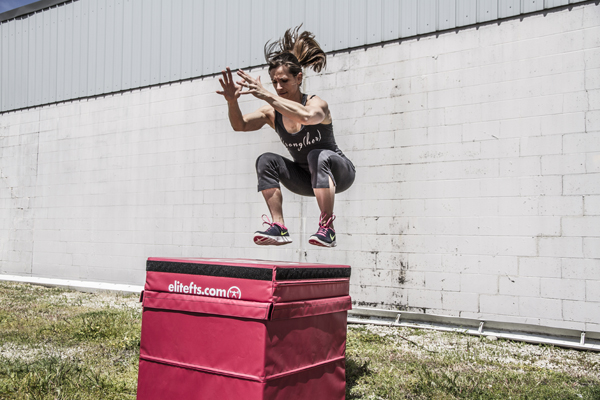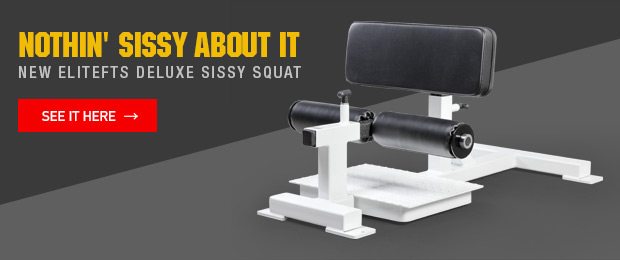
For any coach that has worked with enough athletes, you know by now that teaching a hinge movement can be difficult. Many athletes, young and even older ones, don't understand how to get into a position that requires them to keep their chest up, back flat, knees slightly bent, all while bending forward.
Their brains do one of two things:
*Literally explode
*Tune you out because they aren't understanding it
I've watched countless coaches repeat the words "chest up" over and over and over to a kid trying to do an RDL movement as the kid continues to look like the hunchback of Notre Dame. Here's a clue: No matter how many times you say chest up... HE'S CLEARLY NOT UNDERSTANDING WHAT THAT MEANS! Do you know why???
Because he actually thinks his chest IS up.
What is there to fix if he thinks he's doing it right? And yes, sometimes physically they just don't know how to manipulate their bodies to get into that position.
I just started a month ago with a high school hockey kid. He had done some training elsewhere but it was mostly TRX and conditioning work (Read: no loaded weight training). So while he had an idea of some exercises, I could tell within minutes he was struggling with position.
Here are some key things we did to progress him from above hunchback position to being loaded in less than 3 weeks:
1. Give them the exercises you're doing for the day as part of their warm-up.
His warm-up consisted of squats, jumping jacks, and dynamic stretches. In less than 5 minutes I could see that he was squatting with his heels coming up, knees all over the place, shoulders rounded forward and head down. His walking lunge stretch was atrocious as well. He's a shy quiet kid, so instead of telling him to squat, watching him and then telling him all the things he was doing wrong (not a good way to build a new kid's confidence), I could see his improper movement patterns from the start. So when it came to teaching him how to squat, I could give him subtle cues without making him shrink down.
2. Continue to use the exercises he needs positional help on in the warm-up before loading.
It's easy for us coaches to want to jump right into what's on paper. With his turtle shell squat and RDL, there was no way I was going to load him until he got that movement down. To him, this was just a warm-up. To me as a coach, this was to see how he was progressing in those movements to note when we could start loading. For the next 2 weeks, his warm-up went like this:
MB Slams x5
Squats x10
MB RDL x10
Pushups x10
We would go through that 3 times so that gave him 30 chances each day to get the hinging RDL right. You better believe he caught on quick. Even after he "mastered" it we continued to do it as part of the warm up to ingrain the pattern even more.
3. I found cues that helped him understand, rather than barking out the "normal ones"
The first day we did the RDL movement in the warm-up. I said, "Good! Now let's try to get that back flat and chest up a little more." Nope. That cue meant nothing to him. Same hunchback, same position.
So the second set, I said, "Hey, who's that on your shirt." He shyly named the name of some rapper I had never heard of. I said, "On this next set, I want you to keep that picture of "so-and-so" facing me. Show me the front of that shirt big and proud, even as you're leaning forward, I want you to make sure I can see that picture the whole time."
BINGO!
That made sense to him. From this point on, I explained to him that's what I mean by "chest up". Now that cue makes sense.
4. Progress the movement by moving it into the workout loaded, but adding a similar variation back to the warm-up.
After a few sessions, he was getting the hinge down much better and without as much cuing. Not perfect but acceptable. So I moved the RDL movement to the main strength part of training, loaded with dumbbells, but added in a MB goodmorning (as seen in the video) to the warm-up. This allows him to warm-up those muscles, keep working the hinge movement, but learn how it feels with the weight loaded differently.
5. Strength movements made easy.
Now I know he understands positionally what it feels like to have a "straight back", I can begin to slowly load. I opted for the trap bar deadlift (again, ingrain patterns while building posterior chain through accessories) and the Yoke bar squat. I know for a fact he's not actively thinking about engaging certain muscles while he is doing these movements. He will get there, but for now he's safe, the motor pattern is there and he's loading more each week which is building up resiliency in the muscles and tendons.
Below are some clips of the progressions I used. I wish I had a video of what his "before" RDL looked like.
1. You can see in the DB RDL warm-up he's bending his knees a little more than I'd like. I was ok with this because this was literally day 2 of training and the "flat back, knees bent, chest up" position had clicked, so I was ok letting that go for the day. Don't overload the athlete on day 1.
2. MB Goodmornings, you can see that he's slowly getting the "slight knee bend, hips back" cues. He's still keeping a neutral spine so I'm good with what he's showing me here.
3. The trap bar came easy after figuring out the hinge thing the 2 weeks prior. I've seen some coaches (myself included) try to jump straight to this when positionally they don't have it figured out yet. Can be super frustrating for both parties. It's ok not to load them until they get to a point that is acceptable.
4. Now we loaded the SSB bar. Not perfect and still a lot of work to do. I'd like to see more control on the eccentric, but again, point is you can see that he mechanically has the hinge part of the movement down.










1 Comment